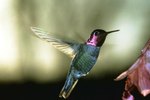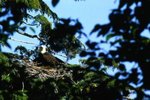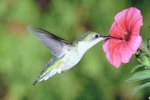
The 17 species of penguin live on the coasts and in the coastal waters of all the continents of the Southern Hemisphere. These flightless birds are known for their upright posture and stiff, flipperlike wings. Penguins are highly social, and most breed in large colonies. Because individual birds are so similar visually, penguins have developed complex vocal calls and physical displays to communicate and identify each other.
Colony Vocalizations
In large colonies, penguins use vocalizations to communicate information and tell different birds apart. Between various colony members, contact calls are used to recognize and identify each other. Each penguin has a distinct call, with additional recognizable differences between male and female vocalizations. A simpler threat call is used to defend individual territory, as well as to warn the entire colony of an approaching predator.
Display Vocalizations
The most complex calls are those between two paired mating penguins. These display calls convey territorial, sexual and identification information. Male penguins trumpet and swing their heads to communicate possession of a particular nesting site. Paired penguins perform similar mutual vocalizations to communicate their pairing, to each other and to the rest of the colony. These displays continue throughout the breeding season.
Feeding Calls
Once a chick can maintain its own body temperature, both parents leave the nest to forage for food. When they return, they must be able to recognize their own chick so they know which one to feed. Chicks indiscriminately plead to all adults for food, but parents recognize the distinct individual call of their own young and ignore the cries of others. This is especially important where the young are kept together in a nursery.
Physical Displays
Penguins have developed several physical displays that communicate a defensive, aggressive or submissive stance to their colony members. They wave their heads or flippers to defend territory, and they bow their heads as a show of submission. Penguins’ feathers maintain their waterproof nature only with thorough preening. Preening each other is a sign of bonding, especially in mating pairs. Mating penguins dip their heads toward each others’ feet, or toward the nest, as a show of mutual submission and bonding.
Smell
Penguins use their sense of smell to find their mates after feeding at sea, and to return to the same nesting site year after year. The birds also can detect relatives using their sense of smell, researchers at the University of Chicago and the Chicago Zoological Society found. Penguins and their offspring stay in the same colony throughout their lives, and this smell-based recognition prevents inbreeding. Penguins also might use their sense of smell to identify mates from earlier years, reinforcing monogamous relationships.
References
Photo Credits
-
Jupiterimages/Photos.com/Getty Images
Writer Bio
Jennifer Mueller began writing and editing professionally in 1995, when she became sports editor of her university's newspaper while also writing a bi-monthly general interest column for an independent tourist publication. Mueller holds a Bachelor of Arts in political science from the University of North Carolina at Asheville and a Juris Doctor from Indiana University Maurer School of Law.



